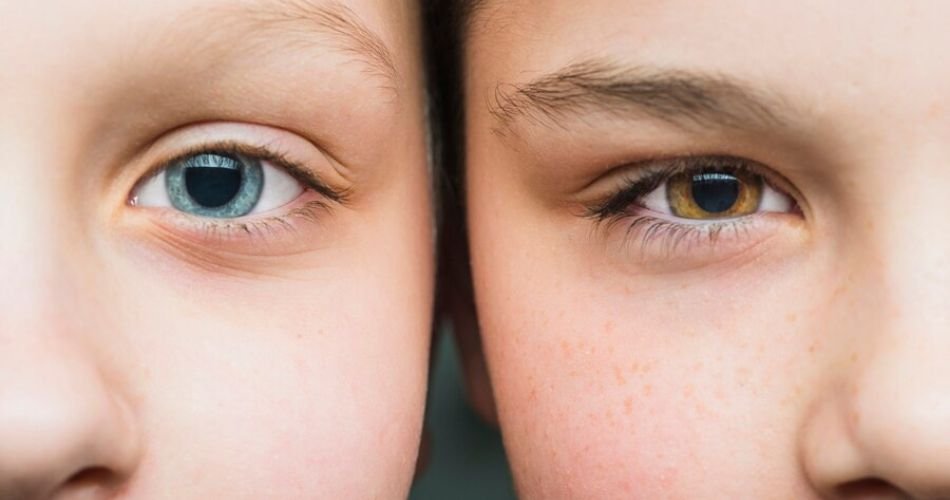When it comes to facial features, the shape of your eyes plays a major role in your overall appearance. Whether you’re applying makeup, posing for photos, or simply looking in the mirror, the distinction between different eye types becomes increasingly significant. One of the most common comparisons people make is hooded eyes vs normal eyes. While this comparison is frequently discussed in beauty communities, it often lacks a deeper understanding of what these terms actually mean and how they influence one’s style and self-image. This article provides a comprehensive, in-depth look at hooded eyes and normal eyes—focusing on their structure, challenges, makeup tips, and how to embrace your natural look with confidence.
Understanding the Basics of Eye Anatomy
To truly grasp the difference between hooded eyes vs normal, it’s important to understand basic eye anatomy. Your upper eyelid is made up of muscle, fat, and skin that protects the eye while allowing for a range of expressions. A “normal” eye shape—often considered a standard in beauty—is typically defined by a visible crease between the eyelid and the brow bone. This space allows for more eyelid exposure, which many find easier to work with cosmetically. On the other hand, hooded eyes have an extra layer of skin that folds down from the brow bone, covering the crease and sometimes resting on the lash line. This gives the eye a slightly smaller or more deep-set appearance, which is beautiful in its own right but presents different visual and cosmetic characteristics.
The Physical Difference: Hooded Eyes vs Normal
The most obvious difference between hooded eyes vs normal eyes lies in how much of the upper eyelid is visible when the eyes are open. People with normal eyes typically have a prominent, unobstructed crease and plenty of visible lid space. In contrast, hooded eyes appear more shaded or hidden due to the skin folding over the lid. This structural difference doesn’t affect eyesight in most cases, but it significantly influences makeup application and facial expression. Hooded eyes may appear more relaxed or mysterious, while normal eyes are often seen as more open or expressive. Both types are naturally occurring and equally stunning, just with different aesthetic appeals.
Myths and Misconceptions: Clearing the Air
One common myth when discussing hooded eyes vs normal is that hooded eyes are a flaw or a condition that needs correction. This is simply not true. Hooded eyes are a normal genetic trait, found in many ethnicities around the world. They are not “droopy” or “tired-looking” by default, though aging can cause more pronounced hooding in all eye types. Another misconception is that people with hooded eyes can’t wear bold or creative eye makeup. In reality, with the right techniques, hooded eyes can pull off dramatic looks just as well—if not better—than their counterparts.
Makeup Techniques for Hooded Eyes vs Normal
In the world of beauty, the topic of hooded eyes vs normal often revolves around makeup strategies. For those with normal eyes, makeup is generally more straightforward. The clear crease and ample lid space make it easy to blend eyeshadow, apply winged eyeliner, or experiment with bold styles. Hooded eyes, however, require a bit more customization. The key is to apply shadow slightly above the natural crease to give the illusion of more space, use matte shades to avoid drawing attention to the fold, and keep eyeliner thin to avoid crowding the lash line. Waterproof products are also a must to prevent smudging within the fold. With practice and patience, people with hooded eyes can master stunning, eye-catching looks.
Aging and Its Impact on Eye Shape
As we age, the skin around the eyes naturally loses elasticity. This can cause even individuals with so-called normal eyes to develop hooded features over time. The conversation around hooded eyes vs normal becomes especially relevant with age because many start to notice their eye shape changing. Hooding is a common part of the aging process and is not limited to one specific eye type. Embracing these changes instead of resisting them can lead to a healthier self-image and a more graceful aging process. There are also medical and cosmetic procedures like blepharoplasty that address excessive hooding if it becomes a vision concern, though it should never be seen as a requirement for beauty.
Celebrities and Public Figures: Redefining Eye Shape Beauty
A quick glance at celebrities proves that both hooded and normal eyes are equally celebrated in the world of fame and fashion. From Blake Lively and Emma Stone, who have hooded eyes, to Anne Hathaway and Natalie Portman with normal eyes, the media showcases beauty in all its diverse forms. These role models help deconstruct the outdated idea that one type of eye is better or more attractive. In discussions about hooded eyes vs normal, it’s important to highlight how visibility and representation in media influence our perception of what’s considered beautiful. The more diversity we see, the more we learn to appreciate all natural eye shapes.
Cultural Perspectives on Eye Shape Norms
In different parts of the world, eye shapes carry varying levels of cultural meaning. In East Asia, monolids and hooded eyes are incredibly common and are often viewed through a lens of cultural identity and pride. Conversely, Western beauty trends have traditionally favored larger, more open eyes. These cultural preferences affect how hooded eyes vs normal eyes are perceived globally. However, thanks to globalization and the internet, more people are challenging these old norms and embracing beauty in all its forms. Social media, in particular, has become a platform for makeup artists and influencers with all kinds of eye shapes to showcase their artistry.
Functional Concerns: When Eye Shape Affects Vision
Although usually a cosmetic consideration, the hooded eyes vs normal debate occasionally enters the realm of medical necessity. In some cases, excessive skin in hooded eyes may sag to a degree where it obstructs peripheral vision. This can lead to eye strain, headaches, and discomfort, particularly during tasks like reading or driving. In such instances, surgical intervention may be recommended. On the other hand, individuals with normal eye shapes generally don’t face these challenges unless age or health conditions lead to secondary hooding. It’s important to differentiate between aesthetic preferences and functional needs when exploring this topic.
Choosing the Right Eyewear Based on Eye Shape
One overlooked aspect of the hooded eyes vs normal conversation is how eyewear interacts with eye shape. The right pair of glasses can enhance or balance out certain features. For hooded eyes, frames with lifted corners, such as cat-eye or butterfly shapes, can help open up the face and counteract the appearance of heaviness around the eyelids. People with normal eyes often have more versatility in choosing frame styles, as the eyelid structure doesn’t interfere as much with how glasses rest on the face. Still, comfort and personal style should always come first.
Fashion and Photography Tips for Eye Types
In photography and fashion, understanding your eye shape can enhance the quality of your portraits and outfits. The contrast between hooded eyes vs normal becomes clear in how each responds to lighting and angles. Hooded eyes benefit from soft, diffused lighting that reduces shadow under the brow bone, while direct lighting can sometimes accentuate the fold more than desired. For normal eyes, almost any lighting works well, thanks to their naturally exposed lid area. In terms of fashion, color choices and accessories like hats or scarves can be used creatively to highlight the eyes, making them the focal point of your entire look.
Confidence Is the Key—No Matter Your Eye Shape
Perhaps the most important takeaway in the discussion of hooded eyes vs normal is that confidence overrides everything else. Your eye shape doesn’t define your beauty, your worth, or your potential. Whether you’re using makeup to accentuate your natural features or going completely bare-faced, what truly matters is how you feel about yourself. Learning to love your eyes—hooded or otherwise—is a powerful act of self-acceptance. Beauty isn’t about fitting a mold; it’s about breaking it.
Conclusion
In wrapping up the debate of hooded eyes vs normal, it’s essential to realize that these labels are more about description than value. Each eye shape comes with its own set of traits, challenges, and aesthetic possibilities. Hooded eyes offer a sense of mystery and sophistication, while normal eyes provide a versatile canvas for creative expression. Neither is better or worse—they’re just different. The more we understand these differences, the more empowered we become to embrace our individuality. Instead of comparing or conforming, let’s celebrate the full spectrum of beauty that eye shapes represent.




